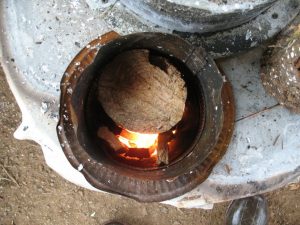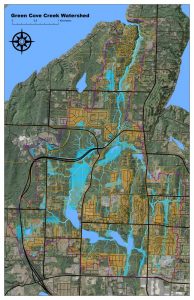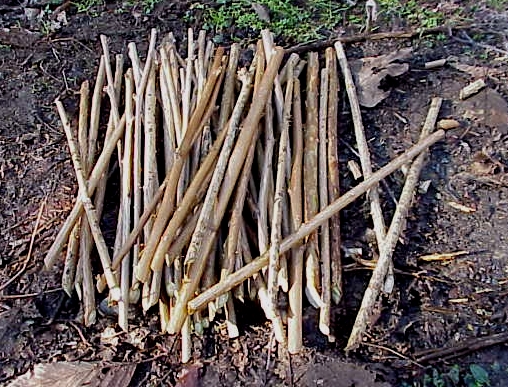In Springtime 2018 I purchased the ecosystemguild.org domain, built a website and started suggesting we could build a volunteer restoration collective based on reciprocity, shared knowledge, and direct action. After a flurry of work, I’ve been taking a break to gather my thoughts. Four months later its time to report on the current situation, the lessons learned, and my proposed direction.
Web Infrastructure and Content
STATUS
 We have a domain and third party web host for our WordPress site. The site has light introductory text, eleven articles describing a restoration camping vision, and mechanisms for promoting and tracking events. We can expand the site for paypal sales, membership, reservations, or other functions. The site funnels to a Facebook group (129 members) and an integrated MailChimp mailing list (105 subscribers with a 39% open rate). We also have a LinkedIn group (52 members). For people who have expressed some direct interest in getting closer to the project, we have a a RiseUp listserve (21 members), a Trello board, and associated google drive linked to a corporate e-mail account. The Salish Sea Restoration wiki provides a mechanisms for curating topic or place-based information. Through posting articles on social media, 522 users have make 902 visits to the website with a two-minute average session. With diligent social media posting we can push up to around 20 hits a day, but that tails off quickly. After a period of no promotion we get a hit every couple days.
We have a domain and third party web host for our WordPress site. The site has light introductory text, eleven articles describing a restoration camping vision, and mechanisms for promoting and tracking events. We can expand the site for paypal sales, membership, reservations, or other functions. The site funnels to a Facebook group (129 members) and an integrated MailChimp mailing list (105 subscribers with a 39% open rate). We also have a LinkedIn group (52 members). For people who have expressed some direct interest in getting closer to the project, we have a a RiseUp listserve (21 members), a Trello board, and associated google drive linked to a corporate e-mail account. The Salish Sea Restoration wiki provides a mechanisms for curating topic or place-based information. Through posting articles on social media, 522 users have make 902 visits to the website with a two-minute average session. With diligent social media posting we can push up to around 20 hits a day, but that tails off quickly. After a period of no promotion we get a hit every couple days.
LESSONS
Writing content is labor intensive, and makes sense where it serves another function, such as clarifying strategy or promoting an event. I suspect we can maximize cost effectiveness of web content by 1) making content useful is some other way, and 2) cross posting from other groups, or promoting content on the Salishsearestoraiton.org wiki.
DIRECTION
I’d like to create a set of eight articles, one for each season. Each article would be updated over time, as we get more sophisticated with our timing. This also gives us a recyclable set of articles that can be republished on annual intervals. These articles ultimately support a watershed restoration project management curriculum.
Communications and Community Development
STATUS
My current practice is to post to the facebook group and then “share” the post with a set of related regional grounds (for example, Restore Cascadia). Bi-seasonally (every 6.5 weeks or so) I send an email update to the MailChimp list, including any new articles or other events. My goal has been to have this update coincide with work plan review, and public event to date held at the library, a public park, or a local restaurant.
LESSONS
Public events are labor intensive but have created a small network of more engaged individuals (the listserve) and several valuable leads. However one-on-one interviews and chance conversations have been just as productive if not more so. I think an improvement would be to have pre-scheduled planning and social meetings at a fixed location and time, located within the target watershed, and focused on next steps while allowing newcomers to connect with the project.
The eight-times-per-year newsletter and planning session feels like an appropriate schedule. Long enough to allow for meaningful work, but frequent enough to maintain contact. However there is I think very little interest in “planning something”. I think we’ll be much more effective developing and marketing products, rather that attracting people to co-create an idea. This is disappointing but not surprising.
DIRECTION
My proximate goal is to develop a modular educational program, that is focused on 1) watershed risk analysis, 2) watershed vegetation management strategies, and 3) government engagement strategies and tactics. I would test this program in association with specific watersheds. These events and content generated for these activities provides a stronger community building base of activity.
Through education I want to focus effort on building and empowering the existing direct-action volunteer restoration community. The existing volunteer mobilization system is competitive and designed to serve institutions rather than build a dynamic and self-organizing volunteer network. I will approach existing restoration partners and learn how we can empower their volunteer communities.
Institutional Structure
STATUS AND DIRECTION
After researching operating agreements, and templates for cooperative and sociocratic governance I am preparing a LLC operating agreement. This will allow me to enter into agreements and manage accounts, and bring new individuals into a formal collaborative relationship. I have a few collaborators willing to review, but I am now assuming that partners want to see the product, not design the vehicle. The function of the LLC will be to run camps and projects and create a foundation to support volunteer empowerment (either free standing or as a project of an existing 501c3 non-profit corporate partner.)
Camping, Tools, and Nomadic Infrastructure
STATUS
At this point I am focussed on developing a personal kit with which I can support field camps. I have a trailer hitch and have purchased and am assembling a 4 x 8 foot, 1720 lb capacity trailer. I have sketch designs for modular components that can be mounted on the trailer and expand to a tarp-covered workshop, tool shed, kitchen and classroom. This would be an initial  “expeditionary” unit, and could demonstrate a number of technologies that would transfer to nomadic residential restoration camping. My personal hand-tool kit is relatively complete, but only supports one worker. Existing volunteer organizations offer tool loans to support larger crews over the short term. I have designs for a mobile rocket stove core using perilite and refractory cement for cooking or heating that need to be tested. I have located designs for a well-designed, self-contained and mobile composting toilet system based on 55-gallon polyethelene drums.
“expeditionary” unit, and could demonstrate a number of technologies that would transfer to nomadic residential restoration camping. My personal hand-tool kit is relatively complete, but only supports one worker. Existing volunteer organizations offer tool loans to support larger crews over the short term. I have designs for a mobile rocket stove core using perilite and refractory cement for cooking or heating that need to be tested. I have located designs for a well-designed, self-contained and mobile composting toilet system based on 55-gallon polyethelene drums.
DIRECTION
I am planning on developing this expeditionary kit and testing it at day-camps, where we provide self-contained food, water, and comfort on site with local materials. This will support both publicity and give a field-testing opportunity. Restoration and workshop events will generate donations to support expansion of unique equipment not available from local partners (for example: construction materials, solar water pumping, broad forks, scythes, or resources for tool maintenance and stewardship).
Scatter Creek Prospecting
STATUS
I invested substantial time in building a potential relationship with Heernett Environmental Foundation and its lands, a large conservation landowner in the Scatter Creek Watershed. They were a “rural land trust” with a “working land” ethos, and so were supportive of active land management including camping, much more so that “urban environmentalist” land trusts. Staffing turnover within Heernett has delayed any relationship there. Multiple calls to director of Center for Natural Lands Management, also active in the watershed, have not been returned. Veterans Ecological Trades Collective is in the early stages of establishing an incubator farm and training facility also in the Scatter Creek Watershed, but the location next to the freeway is less attractive for destination camping.
DIRECTION
I suspect Scatter Creek will become an important watershed over time, but the challenge to access Heernett lands and the distance from the South Sound population core reduces my enthusiasm for Scatter Creek as an initial watershed. Based on some initial queries and conversations, I am not anticipating strong volunteer engagement from the local community around restoration. CNLM does not appear to be a motivated partner at this time. I suspect the Guild project needs to start in a population core to build a community base, rather than a location farther afield that requires more effort to lure community. In the future, the Heernett lands on the Chehalis River at the Scatter Creek Community Farm, amidst the Independence Valley farming community may provide the best local opportunity for stepping into a farming landscape with our proposed stewardship and reciprocity model. I aim to continue promotion and support for VETC with mapping and in other little ways where I can, ultimately they may be partners in developing a second-generation expeditionary kit through a grant. I will continue to connect with CNLM staff as part of a larger community of volunteer recruiters.
Forestland Prospecting
STATUS
I had discussions with Nisqually Land Trust about the community forest initiative on Busy Wild Creek in the headwaters of the Mashel watershed.. These lands are adjacent to the Mt Tahoma Trails Association easements, a large cross-country volunteer-managed hut-to-hut ski cooperative. Nisqually Community Forest and neighbors may prove to be a good target, and Busy Wild is a core for Nisqually River steelhead productivity. The site is even farther from a population core than Scatter Creek and so the same challenges are present. There are also “community forest initiatives” on the state-managed Teanaway Project and through the Chimacum Ridge Vision of Jefferson County Land Trust.
I’ve had a few short conversations with a private landowner in the Decker Creek Watershed in the Satsop near Matlock. The Satsop watershed is controlled by Green Diamond, and Decker Creek is one of many corporate-controlled industrial forest watershed. The Satsop is one of four priority watershed for fishery enhancement in the Chehalis Basin Strategy. The interested landowner is within a patch of in-holdings known as “Deckerville” upstream of a recent Capitol Land Trust acquisition, a large wetland complex. This may be an interesting opportunity, but is again removed from our core regional population, and I’d want to explore the relationship with Green Diamond and other local partners before focusing operations in the Satsop.
DIRECTION
Learning how to support “community forest” efforts, and building relationships for direct interaction between nearby forestland catchments and local communities offers a very exciting opportunity for reconnecting rural production, urban consumption, and forest stewardship. I believe that stepping into a forested headwaters is a logical next step following more community development within an ex-urban setting, and as we develop guild community and capacity for self-sufficient field work.
Green Cove Creek Prospecting
STATUS
 Green Cove Creek Watershed is a small coastal catchment which occupies most of Cooper Point Peninsula, half in the City of Olympia, and half in unincorporated Thurston County. It includes the Grass Lakes Nature Reserve, eight Capital Land Trust properties and easements, portions of The Evergreen State College, as well as several small organic CSAs and farms providing food for the Olympia Area (e.g. Calliope, Common Ground, Township 18). An expansive wetland complex feeds a very small coho and cutthroat stream. Despite designation as a conservation watershed by City and County, it is being modified by residential development pressure, and the hydrologic integrity of the system, compromised by colonization, will be severely tested under population growth and climate change. The threatened Olympic Mud Minnow has been observed within the wetland complex along with a beaver population, creating some interesting legal entanglements. Because of city regulation there are considerable open space landscapes and unmanaged trails that have limited stewardship and appear barely used by the surrounding community, but which can provide plant materials and an educational resources. We have connected with a couple of motivated conservation land owners and the City of Olympia, and there are restoration sites, and a small existing volunteer community working at Grass Lakes.
Green Cove Creek Watershed is a small coastal catchment which occupies most of Cooper Point Peninsula, half in the City of Olympia, and half in unincorporated Thurston County. It includes the Grass Lakes Nature Reserve, eight Capital Land Trust properties and easements, portions of The Evergreen State College, as well as several small organic CSAs and farms providing food for the Olympia Area (e.g. Calliope, Common Ground, Township 18). An expansive wetland complex feeds a very small coho and cutthroat stream. Despite designation as a conservation watershed by City and County, it is being modified by residential development pressure, and the hydrologic integrity of the system, compromised by colonization, will be severely tested under population growth and climate change. The threatened Olympic Mud Minnow has been observed within the wetland complex along with a beaver population, creating some interesting legal entanglements. Because of city regulation there are considerable open space landscapes and unmanaged trails that have limited stewardship and appear barely used by the surrounding community, but which can provide plant materials and an educational resources. We have connected with a couple of motivated conservation land owners and the City of Olympia, and there are restoration sites, and a small existing volunteer community working at Grass Lakes.
LESSONS
I am coming to the conclusion that it will be very difficult to start both residential camping, on-the-ground restoration, and community development all simultaneously. The on-the-ground work is critical to maintain a direct action focus, and for skill development. Community development is the center of the ecosystem guild-restoration camping model. Because of this it makes sense for camping to come later, emerging from the volunteer restoration community as we are ready. This suggests our first phase should be building and empowering a volunteer community which will be done most efficiently from within our most restoration-sympathetic population core (the Olympia “city-state”). Many of the qualities and technologies of a residential camp can be developed in the context of a “day camp” on city or private conservation lands. These day camp sites can also be developed for managed native vegetation that support watershed operations.
DIRECTION
I am planning on moving forward with a “Green Cove Creek Watershed approach” by verifying volunteer networks and site access and the willingness of the landowners to actively managed native vegetation for production. Such a strategy would focus on community development within the watershed, refining a watershed strategy built from existing conservation efforts, and developing a volunteer organization and empowerment system in synergy with existing parcel-based actors. Our goal will be for this community to become self-organizing, and serve as a model and springboard into similar ex-urban watersheds (for example: Mission/Ellis, Woodard/Woodland), and also to serve as the foundation for expeditions into the agricultural and forestland landscapes surrounding the Olympia city-state.
Eight organizations all recruit volunteers in the Olympia “city-state”. The proximity of Green Cove Creek to The Evergreen State College, and to a lesser degree South Puget Sound Community College, creates the opportunity to match local residents and technical support, with youthful enthusiasm and academic projects to strengthen community development.


